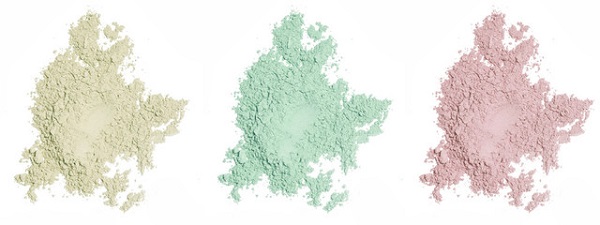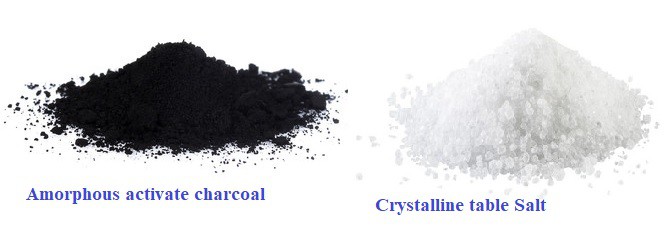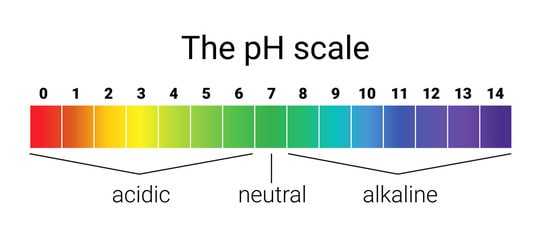Many compounds are identified and classified for proper use by chemists.
But due to many chemical experiments and space explorations, many new compounds emerge which need to be identified.
Even if you find one, you can follow few steps mentioned below in identifying the unknown compound
Identifying Unknown Compounds
Compounds can be identified by two examinations like
1. Physical evaluation
2. Chemical evaluation
Physical evaluation
This relies on physical appearance and characteristics like
- State
- Color
- Texture
- Smell (0d0r)
- Taste
- Feel
Physical properties like
- Crystalline or amorphous nature
- Solubility
- Melting point
- Boiling point
- Refractive index
Chemical evaluation based on
1. pH
2. Conductivity
3. Functional groups etc.
By analytical techniques like
Spectroscopy methods of analysis
Chromatography method of analysis
Lets us see them in detail
State: Materials are available in three states like the solid, liquid and gases.
So when an unknown substance is present, based on its state, we can have an idea of what the compound could be.
Example: Hard solids can be mostly metals, while water and others solvents could be liquids.
Based on color: Most solids have some or other form of color. Liquids and gases are mostly colorless. But still, some possess color. Presence of color easily gives us an idea of what is the compound.

For example, black colored solids indicate it to be a carbon compound like coal, or heavy metal like iron, etc.
Bases on texture and feel: Not all substances are of the same feel in touch. Some are smooth, rough, powderous, sticky, slimy, hairy, slipping, etc. Based on these observations also one can identify the compound.
A smooth substance can be a solid or semisolid or even viscous liquid. Most metals are smooth solids like the aluminum, magnesium, copper, gold, etc.
While oils and waxes are also smooth but hardened liquids.
However, there could be brittle solids which may break when pressure is applied. This could be wood, paper, glass, etc.
Based on odor or smell: Odor is one of the powerful senses which helps to identify the compounds. If a substance has no odor, it would be tough to rely on these methods. However, there are many compounds which have an odor and be easily spotted and identified.
A strong solid like metal can have a negligible odor. But powders, liquids, gases can have some sort of odor.
Based on taste: Our tongue can recognize four types of tastes like sweet, salt, bitter and sour. Compounds like sugars are mostly sweet in taste, while unripe fruits like lemon and orange can be salty or sour. Some fruits like bitter guard can be bitter in taste. Hence, taste helps to identify the compounds in most cases. But it is not advisable always as it can lead to toxicity.
Physical properties: This is very characteristic for a particular compound and can be recorded scientifically.
These properties include
1. Crystal or amorphous nature: This is meant for solids and indicate their physical feel and appearance in the powdered form.

Notice table salt, sugar or even talcum powder. You will feel them be soft but hard particles which can be pricky even. These are crystalline. When observed under a microscope, they will have a three-dimensional structure or lattice. The atoms and molecules would be arranged in a highly ordered microscopic structure.
Their crystal property can be further used to identify the compounds by techniques like the X-ray crystallography.
On the other hand, substances like camphor, charcoal powder are said to be amorphous. If you hold them in your hands, the compound would feel like a solid. But, the powder is not hard and prickly. It can be even crushed to pulp and granules. The particles would not a definite shape even when observed under a microscope. But they would have interconnected structural blocks.
2. Solubility: The unknown substance is dissolved in water. If it is not soluble, it is mostly a non-polar compound. This can then be tested in other organic solvents like ethyl alcohol, acetone, benzene, etc. Compounds like carbohydrates, salts, acids, alkalies, metal oxides are soluble in water. But, polymers like plastic, resins are not soluble in water.
This solubility can also be further evaluated as either completely soluble or partially soluble. But still, it helps to ascertain the polar nature of the substances.
3. Melting point: This test is specifically for solids.
As you might have already known, a substance when thoroughly heated, it changes its state. A solid converts to liquid and a liquid converts to gas at a suitable temperature. Melting point is that degree of temperature where a solid converts to liquid.
This melting point is so specific to a compound as it depends on the internal arrangement of molecules and bonds.
However, this melting point can slightly vary in case of contamination of the test substance by impurities.
This melting point can be ascertained by an oil bath and Kofler bench
Example: Melting point of iron is 1811K while that of Aluminum is 933.47K. The MP of paraffin wax is 310K.
4. Boiling point: Similar to the melting point most liquids have a specific boiling point. It is the temperature at which at liquid converts into a gas at the atmospheric pressure.
Technically boiling point is always higher than the melting point.
Examples: Boiling point of iron is 3134 K, of Aluminum is 2743 K.
Refractive index: The speed of light propagation through the material is called refractive index. This is measured by hectometers. Mostly liquids, gases and transparent solids like glass are estimated.. This is a fundamental physical property of the substance. It is used to identify the substance, its purity and also concentration.
Examples: RF of air is 1.000293 and that of acetone is 1.36 and for benzene it is 1.501.
pH: If a substance is a liquid or gas, its pH can be estimated. Even if it is a solid, it can be dissolved and its pH be noted. The pH indicates if a substance is acidic or basic or neutral.

As you might have already known, acidic pH is less than 7, neutral is exactly 7 and alkaline pH is above 7.
Conductivity: It is the ability of a substance to conduct electricity. This is seen mostly in liquids. Even solids can be dissolved. Based on the ionic strength and mass conductivity varies in between substances.
Functional groups: This method is especially applicable for organic compounds. Functional groups are the parts of the molecule which decide the character of the whole substance. These functional groups include
a) Hydroxyl groups
b) Ketone groups
c) Ester.
d) ether etc.
All these functional groups can be identified by specific chemical tests. Mentioning them is beyond the scope of this article.
Technical methods: These are highly specific and help to identify substances by comparision with standard.
Spectroscopy methods of analysis: This is a method of analysis where the behavior of substance with the light is estimated. It is estimated for its maximal absorbance, fluorscence, etc. Further by methods like the infra red spectroscopy, even the functional groups inside the substance can be determined.
Chromatography method of analysis: This is basically a method of separation. After separation, the individual compounds are estimated by spectroscopy.